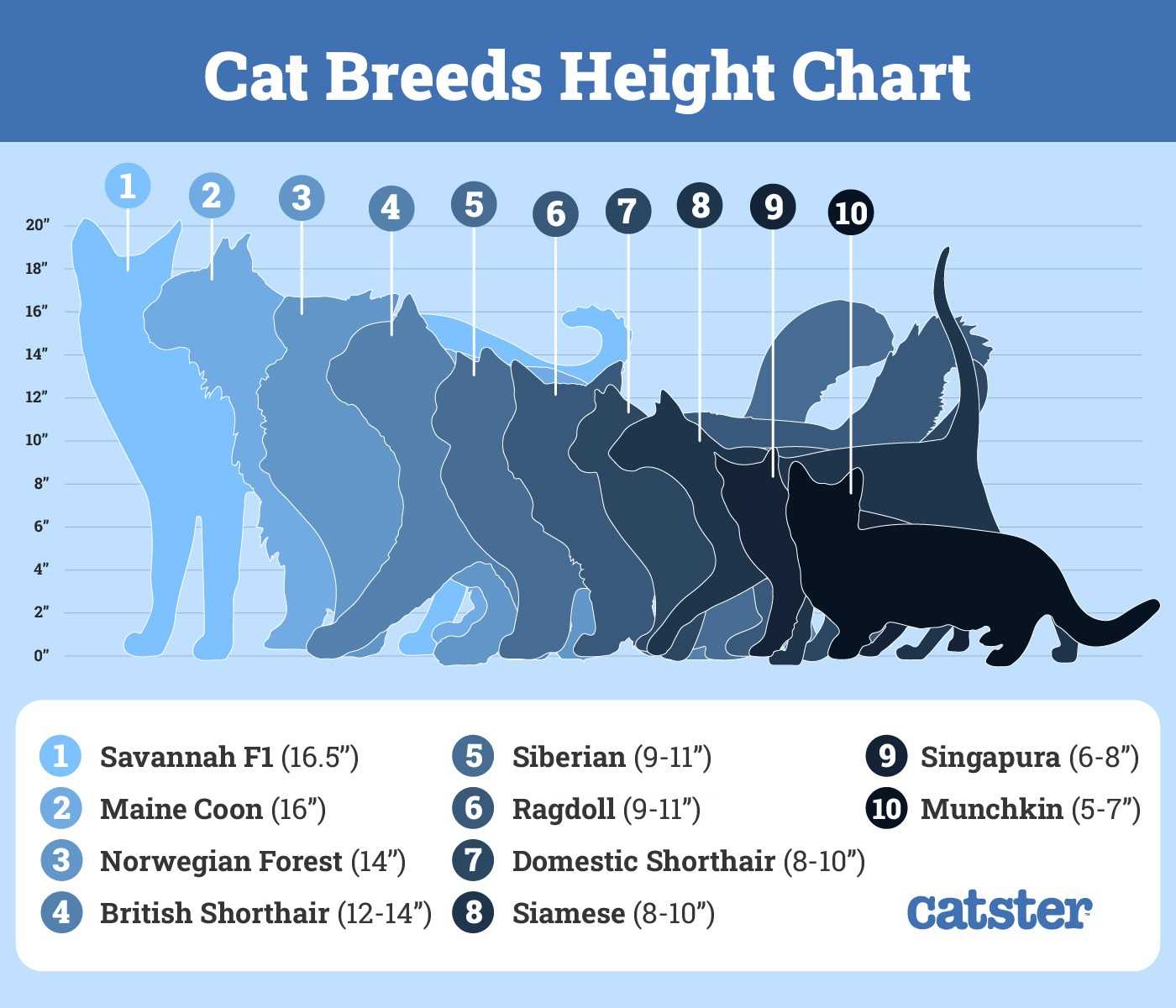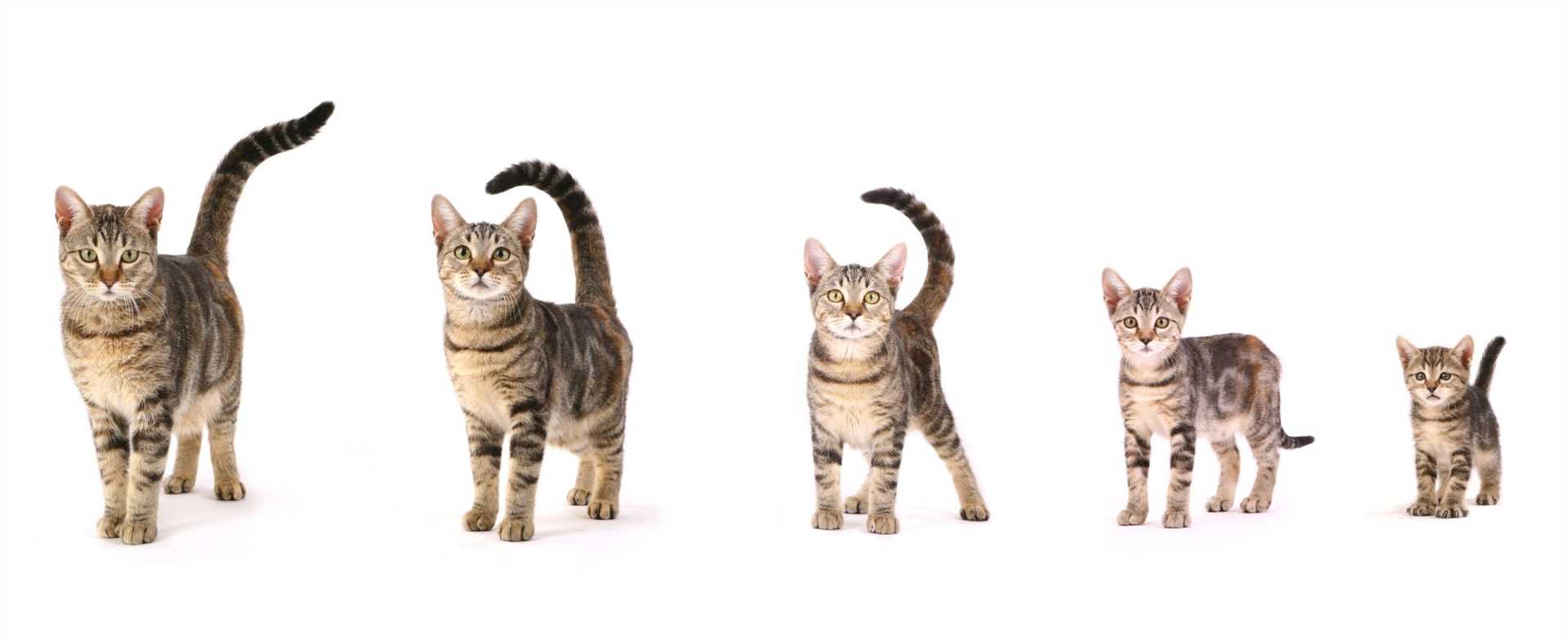

By the time I hit my first birthday, I was already considered an adult. Most of my fellow felines tend to reach their full size and weight between 12 to 18 months. However, larger breeds, like Maine Coons, may take up to 4 years to mature completely.
During the first few months, I experienced rapid changes. Kittens typically double their weight in the first week and grow significantly in height and length. By six months, many of us have already reached about 75% of our adult size.
Feeding and care play a crucial role in this growth phase. A balanced diet rich in protein helps ensure proper development. Regular vet check-ups are essential to monitor health and growth milestones, making sure everything is on track as we transition into adulthood.
Understanding Cat Growth Stages
From my experience, the development of felines can be segmented into distinct phases, each with unique characteristics.
- Neonatal Stage (0-2 weeks): During these initial days, kittens depend entirely on their mothers for nourishment and warmth. Their eyes remain closed, and they are unable to hear.
- Transitional Stage (2-4 weeks): At this point, vision and hearing begin to develop. Kittens start to explore their surroundings, albeit clumsily. Socialization with siblings becomes crucial.
- Socialization Stage (4-9 weeks): Interactions with humans and other animals are essential. Kittens learn to play and exhibit their personalities. This is the ideal time for adoption.
- Juvenile Stage (9 weeks-6 months): Rapid growth occurs during this phase. Energy levels peak, and playful behavior dominates. It’s important to provide a stimulating environment.
- Adolescent Stage (6 months-1 year): Independence emerges, and territorial behaviors may surface. Training and socialization continue to shape behavior.
- Adult Stage (1-7 years): Physical maturity is reached. Activity levels may stabilize, though some remain playful. Regular veterinary checks are essential for health maintenance.
- Senior Stage (7+ years): Slower metabolism and reduced activity are common. Attention to diet and health becomes increasingly important.
Each stage plays a significant role in shaping personality and behavior. Providing appropriate care during these phases is essential for a happy and healthy life.
Factors Influencing Growth Rate
Nutrition plays a crucial role in determining how quickly I reach maturity. A balanced diet rich in proteins, vitamins, and minerals supports strong bones and muscles. Quality cat food formulated for kittens provides the necessary nutrients for optimal development.
Genetics significantly impacts my growth trajectory. Breeds differ in size and maturity rates; for instance, larger breeds like Maine Coons tend to take longer to reach full size compared to smaller ones like Singapura. My lineage can set expectations for my growth period.
Health status directly affects my growth. Regular veterinary check-ups ensure that any underlying health issues are addressed early. Conditions such as parasites or dental problems can hinder development, so staying healthy is essential.
Environment also plays a part; a stress-free home fosters better growth. A calm atmosphere allows me to thrive, while stress from loud noises or changes in routine can impede my progress. Providing a safe, enriching space helps me develop at my best.
Physical activity is vital too. Regular playtime not only keeps me fit but also encourages muscle development and coordination. Engaging in interactive activities helps in strengthening my body, which contributes to overall growth.
Lastly, the socialization experience during my early months can influence my psychological growth. Exposure to different stimuli, people, and other pets shapes my behavior and adaptability, which can indirectly affect my physical development as well.
Average Age for Different Breeds
Each breed reaches maturity at different stages. Here’s a breakdown:
- Siamese: Typically matures around 12 months.
- Maine Coon: Takes about 4 years to reach full size.
- Bengal: Generally matures by 2 years.
- Persian: Usually reaches adulthood by 1.5 years.
- Scottish Fold: Generally matures at 2 years.
- Ragdoll: Takes around 3-4 years to fully develop.
These timelines can vary based on individual factors and health. Regular vet visits can help monitor growth.
Signs Your Cat is Reaching Maturity
As an 8-year-old Scottish Fold, I’ve observed several indicators that signal the transition to adulthood in feline friends. One clear sign is a shift in energy levels. You might notice your young feline becoming less hyperactive, opting for more relaxed activities like lounging or observing their surroundings.
Another noticeable change is behavior towards other pets and humans. A maturing cat often shows increased confidence and may take on a more dominant role in social interactions. Playful antics might decrease, replaced by a preference for more strategic engagement, like stalking or pouncing during playtime.
Physical development is also a key indicator. An increase in weight and muscle mass can be observed, along with a more defined body shape. Fur texture may change too, becoming denser and shinier as they reach their adult coat.
Additionally, you may find that your furry companion is becoming more independent, spending time alone or choosing specific spots in the house as their personal territory. This newfound autonomy often accompanies a shift in vocalization, with fewer meows and more purposeful sounds.
Finally, the desire to mate can emerge, particularly in unspayed or unneutered pets. This instinct is a strong indicator of maturity, emphasizing the need for responsible pet ownership and consideration of spaying or neutering.
For more related tips on care, check out this link: can i use two garden hoses on pressure washer.
Nutrition’s Role in Growth Development
To ensure optimal growth, providing a balanced diet tailored to developmental stages is crucial. Key nutrients like proteins, fats, vitamins, and minerals significantly influence the pace of maturation in felines. A high-quality diet rich in animal proteins supports muscle development and overall health.
Key Nutrients for Growth
Here are essential nutrients necessary for a healthy growth phase:
| Nutrient | Role | Sources |
|---|---|---|
| Proteins | Builds and repairs tissues | Chicken, fish, beef |
| Fats | Provides energy and supports cell structure | Fish oil, chicken fat |
| Vitamins | Supports immune function and overall health | Vegetables, supplements |
| Minerals | Strengthens bones and teeth | Meat, commercial cat food |
Dietary Adjustments for Special Needs

Certain health conditions may require adjustments in diet. For instance, if a feline has inflammatory bowel disease (IBD), selecting the best cat food for cats with ibd is essential to prevent nutrient malabsorption and ensure proper growth. Regular veterinary check-ups are advisable to monitor nutritional needs and adjust accordingly.
Health Considerations During Growth
Regular veterinary check-ups are critical as I develop. These visits ensure that I receive necessary vaccinations and preventive treatments, which protect against various diseases. My human should monitor my weight to prevent obesity, as excess weight can lead to joint issues and other health problems later on.
Dental Care

Oral hygiene is paramount. My human should introduce dental care routines early, including brushing my teeth and providing dental treats. This practice helps avoid dental disease, which can affect my eating habits and overall health.
Socialization and Mental Health
Mental stimulation is just as important. Engaging me with toys, puzzles, and interactive playtime supports cognitive development. Socialization with other animals and people helps me build confidence and prevents behavioral issues, ensuring a well-rounded personality.
When to Expect Behavioral Changes
Behavioral shifts often kick in at around six months of age. This period marks the onset of adulthood, where newfound independence and curiosity become evident. You might observe increased exploration as I test boundaries, seeking new experiences.
By the age of one, personality traits solidify. Playfulness may decrease, making way for a more relaxed demeanor. Social interactions may also evolve; I might prefer to establish my own space or engage with humans on my own terms.
From two to three years, confidence peaks. I may exhibit more assertive behaviors, particularly when it comes to territory. This is also the time when I might become more vocal, as I learn to communicate my needs more effectively.
Neutering or spaying can greatly influence behavior. If done early, it may reduce aggression and roaming tendencies. It’s essential to monitor any sudden changes post-surgery, as these can indicate stress or discomfort.
As I approach five years, a sense of maturity settles in. I might become less active and more selective about playtime. This is a normal part of aging, so it’s important to adjust activities accordingly to maintain mental and physical stimulation.
In my later years, around seven and beyond, I may become more reserved. This is often linked to health changes, so keeping a close eye on my habits is crucial. If I suddenly withdraw or change my eating patterns, it could signal that something’s amiss.
Understanding these milestones helps you anticipate my needs and adjust your approach to fit my evolving temperament. Regular interaction, patience, and observation will ensure a harmonious relationship as I navigate through these stages.









